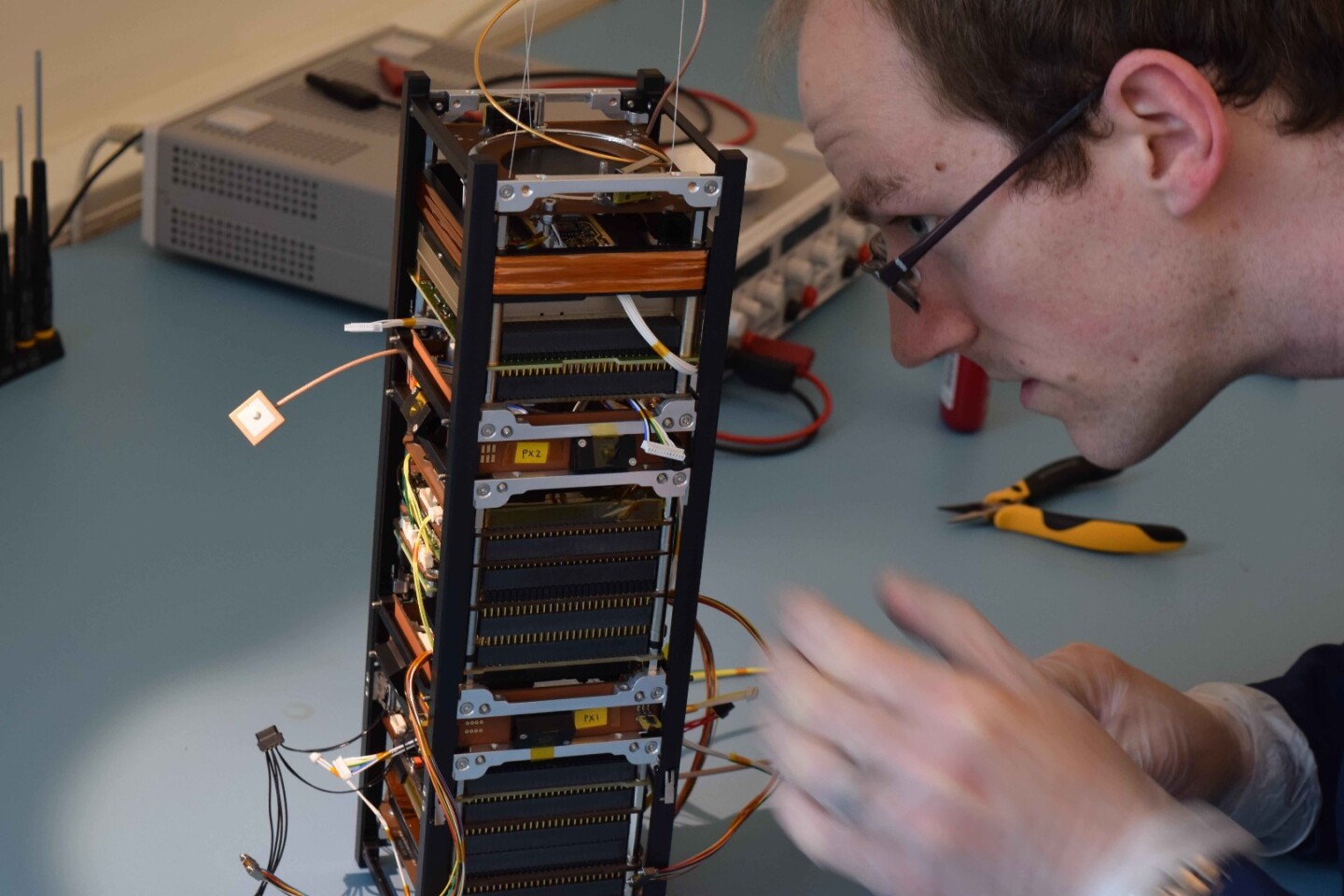The European Space Agency has declared that its miniature GomX-3 technology demonstration satellite is in good health and ready to begin its primary mission. Deployed on October 5 from the International Space Station, the CubeSat will spend six-months testing new radio technology for tracking civil aircraft in previously inaccessible regions of the world and measuring telecom satellite signal quality.
The latest of the GomX series satellites was developed in just a year by Denmark’s Gomspace company before it was sent to the ISS on August 19 aboard the unmanned Japanese Space Agency's Kounotori 5 (HTV-5) cargo ship. From there, it was set into an independent orbit from the station along with the student-built AAUSat-5 CubeSat using a spring-loaded launcher.
Using miniaturized reaction wheels for precision orientation, the 10 x 10 x 30 cm (4 x 4 x 12 in) Gomx-3's main function is to act as a miniature test bed for technology that allows the CubeSat to monitor radio signals from geostationary communications satellites and assess their transmission efficiency. In addition, it has a directional helical antenna and an improved receiver (similar to the one first flown on the Proba-V minisatellite launched in 2013) for tracking tens of thousands of commercial aircraft by means of their Automatic Dependent Surveillance – Broadcast (ADS-B) navigation signals.

GomX-3 also carries a smaller, more advanced version of X-band transmitter first flown on Proba-V that gives the spacecraft much faster data downloads than previous systems. This is supported by a flexible software that gives spacecraft the ability to reconfigure itself in orbit and take on new tasks.
"Following its release from the Station on 5 October, much of the satellite’s proving phase is complete, demonstrating that it is operational and in good health," says Engineer David Gerhard. "We are now taking the first steps towards putting its technology payloads through their paces."
Source: ESA







